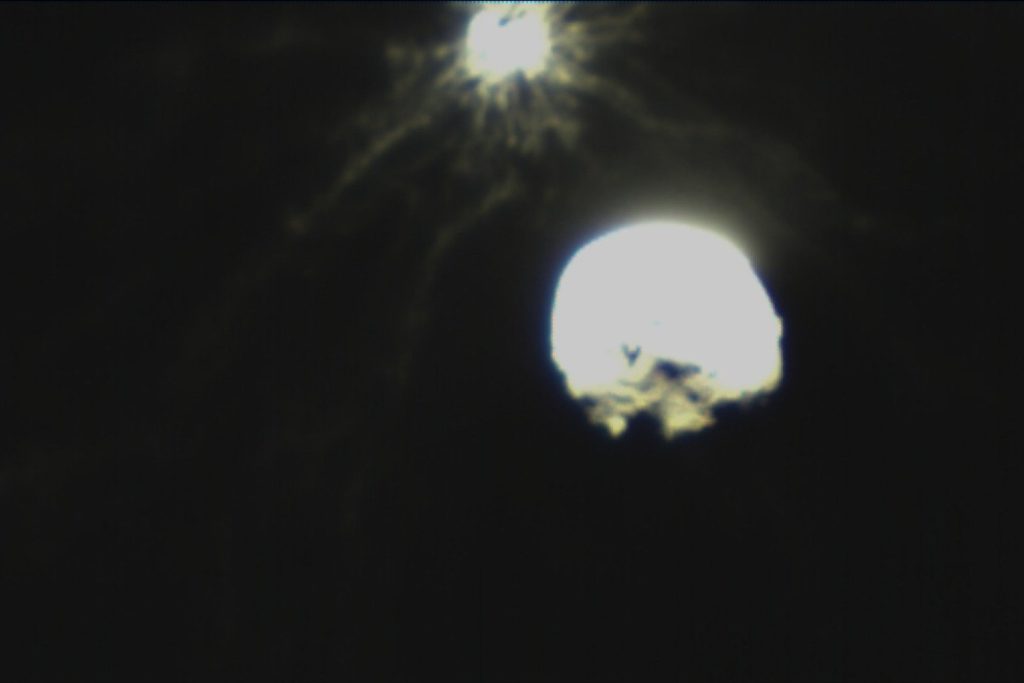
NASA Punched an Asteroid in 2022. Another Probe Is Now on Its Way to the Wreckage (Image Credit: Gizmodo-com)
In September 2022, a NASA spacecraft smashed into a tiny asteroid to slightly nudge it as a test of planetary defense. A follow-up mission has now launched, aiming to rendezvous with the same space rock for a close-up look at the powerful impact’s aftermath.
The European Space Agency (ESA) launched its Hera mission on Monday at 10:52 a.m. ET on board a SpaceX Falcon 9 rocket, which had been grounded following an upper stage deorbit burn anomaly in late September. The Federal Aviation Administration authorized the Falcon 9 launch of Hera, while the rocket remains grounded for other missions until SpaceX, working with the FAA, completes an investigation into the recent mishap. The only obstacle that stood in Hera’s way to the skies was the weather, but the rocket still performed a nominal liftoff despite unfavorable conditions, delivering the spacecraft to interplanetary transfer orbit.
The Hera probe, named after the Greek goddess of marriage, will inspect the damage caused by NASA’s DART mission (Double Asteroid Redirection Test), which apparently really messed up an unassuming asteroid.
NASA’s 1,340-pound spacecraft smashed into Dimorphos, a 558-foot-wide (170-meter) space rock that orbits its larger 2,625-foot-wide (800-meter) companion, Didymos. Datasets gathered by ground-based optical and radio telescopes show that, following the collision, Dimorphos’s orbital period around Didymos shortened from 11 hours and 55 minutes to 11 hours and 23 minutes.
The mission was a success, proving that kinetic impactors can be used to redirect dangerous asteroids should one be headed towards Earth. Still, many questions remain regarding the effect of the impact on Dimorphos.
Ground-based observations are estimated to be stuck with a 10% residual uncertainty with their measurements, and models of the impact still haven’t been able to calculate the mass and makeup of Dimorphos, according to ESA. That’s where Hera comes in, performing a detailed, post-impact survey with the aim of turning a one-time, space experiment into a well-understood planetary defense mechanism. The mission could also provide more clues as to how asteroids form.
Initial studies showed that poor Dimorphos (which didn’t pose a threat to Earth) suffered grave consequences from the impact. In February, a study published in Nature Astronomy showed that the impact led to significant reshaping and resurfacing of the asteroid Dimorphos. The moonlet was severely deformed, and the impact created a large crater. Another follow-up study published in August also revealed that the collision produced a field of rocky ejecta that could reach Earth within 10 years.
When it reaches Dimorphos in 2026, Hera will not only investigate the scene of the crime, it will also measure the asteroid’s mass, as well as its shifted orbit in a far more accurate way than ground-based observatories. Hera will also conduct the most detailed survey of a binary asteroid system, which makes up about 15% of all known asteroids, yet none have ever been studied up close before.
Hera carries a suite of science instruments, as well as a pair of cubesats tucked inside the spacecraft. Once it has reached its target, Hera is designed to deploy the two shoebox-sized cubesats to gather additional data on the binary asteroid system. The data gathered by Hera should inform future asteroid deflection missions.
While the DART mission captured our attention with a daring, science fiction-like collision, Hera will show us just how effective an impact could be in the case of an incoming asteroid.
More: The Most Intriguing Images of DART’s Fatal Encounter With an Asteroid





